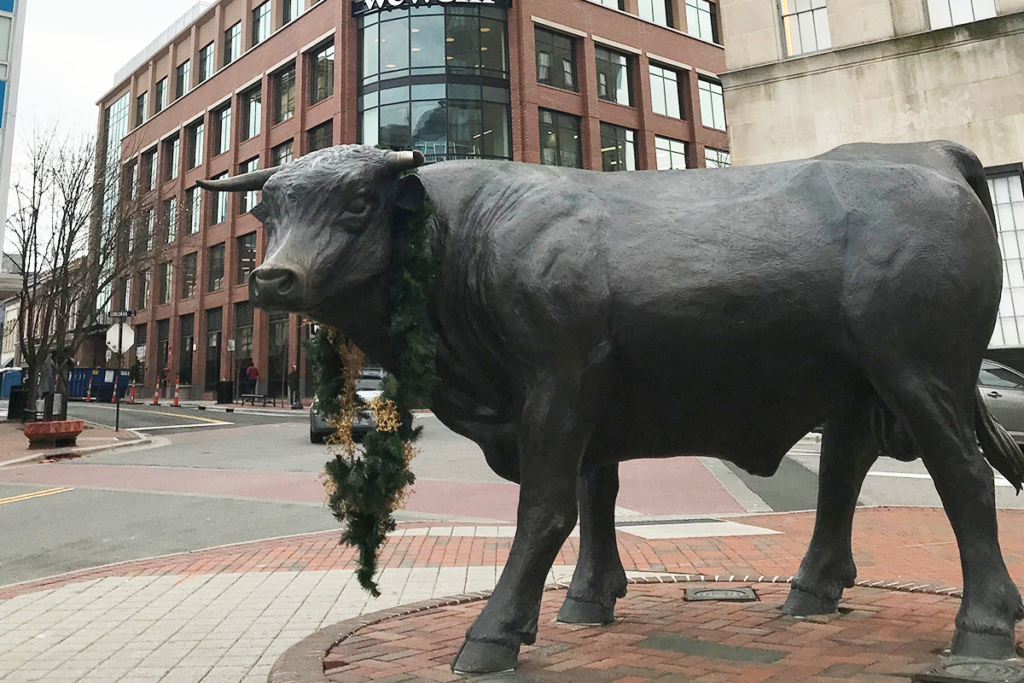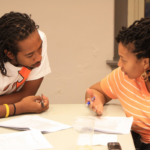FHI 360’s global headquarters sit in downtown Durham, North Carolina, a mid-size city with a growing reputation for being hip, vibrant and diverse. Historically, Durham was known as the Black Wall Street – until urban renewal sent a highway through the middle of the black community in the 1960s. Where past and present meet, Durham has a housing crisis, urban deindustrialization, and persistent poverty that disproportionately affect Durham’s black residents, and its growing Latinx population. These social conditions, in turn, generate and perpetuate health disparities. The 2017 Durham County Health Assessment identified affordable housing, access to health care and insurance, and poverty as among the county’s top five health priorities.
Here I highlight four recent research efforts that show what we have learned about gaps and needs from projects, partnerships and relationships in Durham, North Carolina.
Facilitating cross-sector collaboration
In our five-year National Institutes of Health (NIH)-funded Linking Communities and Scientists project in Durham (LinCS 2 Durham), we convened a Collaborative Council that met monthly and included grassroots members of Durham’s black community as well as organizational representatives. Project partners included NCCU, DCoDPH, and the University of North Carolina Center for AIDS Research (UNC CFAR). You can read more about the LinCS 2 Durham research in this blog post.
In 2013 (the final year of the project), we asked the Collaborative Council members what they saw as the highest priority work we could do to address the health needs of those at risk for HIV. They said people at high risk for HIV had multiple health challenges, and that the things that put them at risk for all those health challenges overlapped. They said Durham needed ways to help people address all these risks and challenges in an integrated way.
With this feedback, our research team focused on how to support Durham’s organizations and partnerships in addressing structural barriers that can’t be addressed at the individual client or provider level. It became increasingly clear that fragmentation functioned as a barrier to information sharing and partnership. Addressing multiple needs is difficult when the services to meet multiple needs are fragmented. Service providers are hard pressed to keep up with their own workloads, let alone fully understand what other providers are doing and how they can most effectively work together.
As researchers and partners, we thought that mapping relationships – how organizations interact with each other – could help community leaders grasp the big picture and figure out new ways to address overlapping health challenges.
In an exploratory study co-led with Betsy Costenbader, we mapped the network of connections between HIV testing organizations and other health and social service agencies in Durham County. We surveyed 26 health and social service organizations, including six providing HIV testing services, about their relationships with each other and referrals. We made a visual network map of the relationships and mapped the geographic locations of organizations along with transportation routes and census data showing income disparities and racial composition of census tracks.
When we shared the study findings with participating organizations, they found that mapping the landscape of their relationships was a practical way to make cross-sector collaboration easier and to improve community health. They were very supportive of using this approach as a tool to monitor efforts to facilitate collaboration because it would allow organizations to assess how everyone is connected and what changes are occurring in the network over time.
Opportunities & gaps in cross-sector member networks
As part of our evaluation, we looked at how member organizations were networked, with 40 local organizations participating in the exercise. We found a mix of sectors across this network, with organizations providing medical care connected to those providing education, human and social services, and other services. We could also see that two organizations – the Boys and Girls Club and the Department of Social Services – played a key role in bridging clusters of organizations that would otherwise be disconnected from each other.
Understanding & respecting the patient viewpoint
The play, written and performed by Anita Woodley, a local performer experienced in health education, was free, open to the public, and recorded live. Among the important themes emerging from this work were cultural influences on diet and nutrition, inaccessibility or unaffordability of health insurance and health care, use of the emergency room as a primary interface with the medical establishment, hypermasculine gender roles and expectations, and experiences of poor service related to race or insurance status. The findings underscore the importance of understanding the life experiences and perspectives of those we ultimately hope to serve through policies and strategic planning.
You can read more about this research in this blog post.
Developing a community-driven response
Initial work was focused on developing a framework that emphasizes the importance of racial equity in a context of gentrification and expanding urbanization. This included discussion about the need to actively build relationships and a shared understanding about race equity among all those engaged. As of this writing, we are providing our first process evaluation report on the initial phase.
As the project moves into 2019, partners will take “the next most elegant step” (Brown, 2017) to develop a shared understanding of the existing Durham food system, and from there to develop a plan of action with the community and take action together to create food system change in Durham. We are excited to be part of this important community work.
Looking forward
Building on our ability to think globally, tell us: what more do you think we can do to act locally?
Photo caption: Major the Bull, Durham, North Carolina
Photo credit: Kate MacQueen



